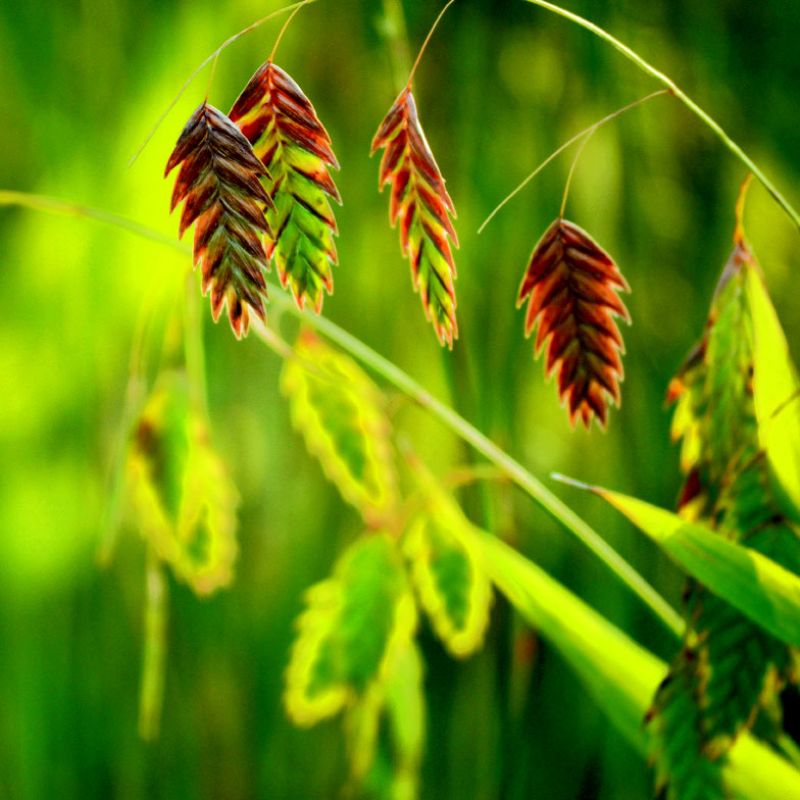
The change of the seasons in the Lowcountry is subtle. There’s no fiery-hued foliage, no crimson-and-gold-tinged treeline to admire. But we can look to ornamental grasses for leaves and blooms that shift shades throughout the year. Green in the summer, purple muhly grass offers spectacular clouds of flowers come fall. From fluorescent green to deep bronze, river oats display a spectrum of hues from spring through autumn, while big bluestem rises eight feet tall and changes from blue-green to reddish-bronze to lavender. In addition to putting on a pretty show, these native perennials help to slow erosion and provide a habitat for beneficial insect populations and wildlife.
River OATS (Chasmanthium latifolium)
Adding three seasons of interest to the garden, river oats are vivid green in spring before summer reveals blue-hued foliage and flowering stems that gracefully dangle translucent green clusters of the flat seed heads that give the plant its name. Reaching from two to four feet in height, this shade-tolerant grass blooms from May through July. Come fall, the seed heads dry out, turning a rich, purplish bronze. Collect them for use in a dried floral arrangement or leave them to self-sow, allowing the plant to spread.
Light: Partial shade
Soil: Sandy soil
Water: Water thoroughly two to three times a week until established.
Maintenance: In early spring, cut back dead stalks to four to six inches above soil line.
Purple muhly grass (Muhlenbergia capillaris)
Also known by the common names “sweetgrass” and “hairawn muhly grass,” this clump-forming perennial adds both color and texture to the landscape. Needle-like, blue-green foliage gives the plant a stiff, upright growth habit that works well in a border or a mass planting. As fall approaches, watch as beautiful billows of pinkish-purple clusters appear, seeming to float atop four-foot stems from September through November. As cooler temperatures descend, the dormant plant’s blooms fade to golden brown.
Light: Full sun
Soil: Sandy soil
Water: Water thoroughly twice a week until established.
Maintenance: Cut back dormant growth in winter.
Big Bluestem (Andropogon gerardii)
This warm-season perennial—also known as “turkeyfoot grass”—stands four to eight feet tall. An upright cluster of flattened leaves emerges in shades of bluish-green in spring, maturing to green with red tinges in summer and turning reddish bronze with lavender tones in autumn. Flowering stems rise in late August, bearing purplish, finger-like flower clusters resembling turkey feet. Effective as a rear border or accent, this grass blooms through September and provides shelter for nesting birds and insects over winter months.
Light: Full sun to partial shade
Soil: Sandy soil
Water: Water thoroughly twice a week until established.
Maintenance: Cut back dormant growth in winter.